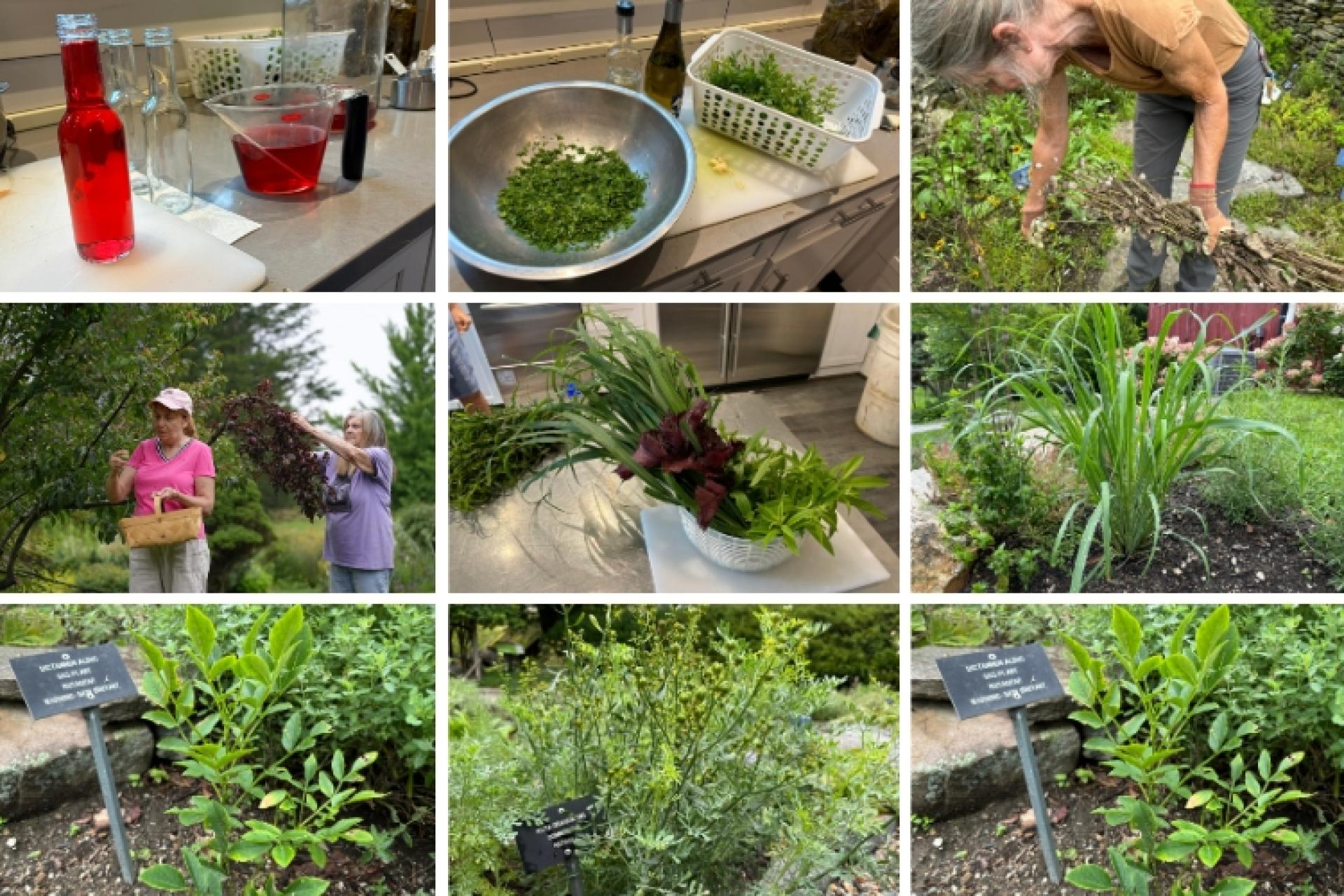You are here
What Is Happening in the BBG Herb Gardens and Kitchen This Week (Aug. 6)?
What Is Happening in the BBG Herb Gardens and Kitchen This Week (Aug. 6)?
By Barbara F. Smith
A PLANT WITH A PURPOSE: You may be familiar with the weekly garden-related articles penned by Margaret Roach for The New York Times. (By all means, check out Margaret’s website at Awaytogarden.com and her podcast of the same name.) Her July 24 article, “Discover Historic Herbs and Plants at the Met Cloisters,” inspired a portion of this article.
To begin, the Cloisters is a 90-year-old museum in upper Manhattan’s Fort Tryon Park, representing medieval architecture, art and beautiful gardens, including an expansive herb garden. An early curator there, Margaret B. Freeman, authored “Herbs for the Medieval Household,” in which she wrote “An herb is a plant with a purpose — you just need to find it. It’s not just about eating or seasoning things.”
Not unlike the Cloisters herb gardens, the Berkshire Botanical Garden's Herb Display Garden groups herbs by their common uses — for example, a medicinal bed, one with plants for dying fibers, another for fragrance. Also, not unlike the Cloisters, the BBG Herb Display Garden is a “teaching garden, where every plant has a story to tell” ... beyond being “just beautiful.” If you happen to visit the BBG Herb Display Garden on a Tuesday morning, you are likely to encounter Herb Associate volunteers tending the beds; please feel free to engage with them (us) and learn more about the herbs growing there.
Looking around the BBG Herb Display Gardens this Tuesday morning, I thought to feature a few herbs that may be less familiar to home gardeners, yet whose histories of use extend back centuries. First in view in the medicinal bed was Common Rue (Ruta graveolens), an evergreen perennial subshrub growing to three feet tall, with blue-green foliage and small yellow flowers when in bloom. Rue has a distinctive fragrance, and its oil can cause skin irritation in the form of small blisters. Its historically varied uses included ingesting to improve eyesight, as an antidote to poisons and insect bites, to treat gout, rheumatism and sciatica and to improve appetite and digestion. In the Middle Ages, rue was considered a reliable defense against witches and their spells. Rue even had a role in the design of playing cards, used as an early model for the suit of clubs (according to Rodale’s Illustrated Encyclopedia of Herbs).
American Arnica (Arnica chamissonis), also known as mountain tobacco, leopard’s bane or mountain snuff, is a medicinal herb of some popular use today. Extracts of the plant are made into lotions to relieve soreness or bruising. It has gained a reputation as an anti-inflammatory, but it should not be used on open cuts or abrasions. “As with any powerful herb, it has to be used cautiously, balancing the good attributes against the negative properties” (according to S. Orr, The New American Herbal).
In the fragrance bed was a Gas Plant (Dictamnus albus), a deer-resistant and drought-tolerant herbaceous perennial, hardy to zone 3, growing to three feet tall with a deep tap root. Other common names include burning bush, dittany, and fraxinella. Its fragrance is likened to lemon peel that evolves into balsam when bruised. Its highly ornamental flowers occur in red, white, striped or blue hues. They prefer full sun and well-drained soil. If the leaves are ingested in large quantities, skin irritation is likely to occur.
The Herb Associates Kitchen Crew continues to produce a wide range of products! Two items new this week are “Shiso Salad Dressing” and a simple syrup made with lemongrass and lemon verbena. Imagine how tasty an addition that would be to a glass of lemonade or perhaps a seasonal cocktail. Jars of the ever-popular “Herb Mustard” were readied, along with “Parsley Vinaigrette,” “Opal Basil Jelly,” “Lemon Verbena Jelly,” stunningly red “Shiso Vinegar,” “Plum Jam,” and a dried herb medley called “Sandwich Sprinkle.”
These products contain the freshest ingredients, grown with green thumbs, and prepared with heartfelt care. We hope you’ll visit the Berkshire Botanical Gardens soon and make a point to visit the Herb Gardens near the Center House. Herb Associates products may be purchased at the Visitor Center’s Gift Shop.
Thank you for your interest in all things herbal at the Berkshire Botanical Garden!
The Berkshire Botanical Garden’s Herb Associates began in 1957 and have been making and selling products for the benefit of BBG ever since. At BBG, the Herb Associates oversee a display garden and production garden, both located near the Center House. Members/volunteers meet every Tuesday morning during the late spring through mid-autumn each year, coinciding when the gardens themselves are open to the public. Members plant, weed and tend the gardens, as well as harvest and process the variety of herbs.
Help Our Garden Grow!
Your donation helps us to educate and inspire visitors of all ages on the art and science of gardening and the preservation of our environment.
All donations are 100 percent tax deductible.


